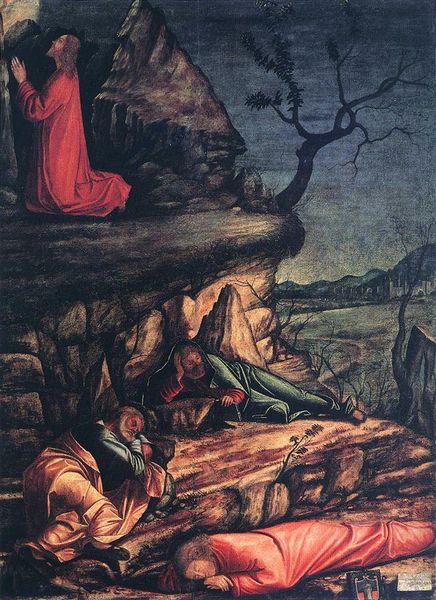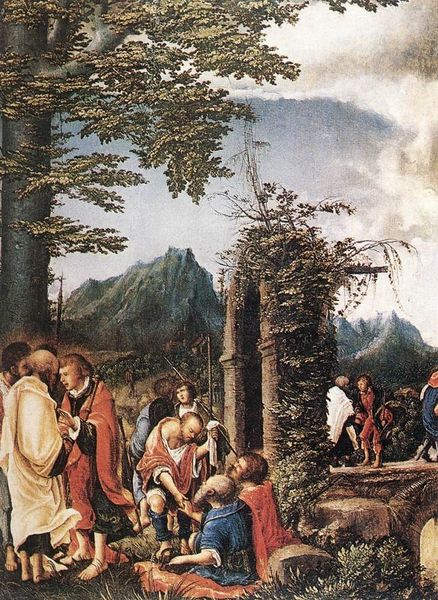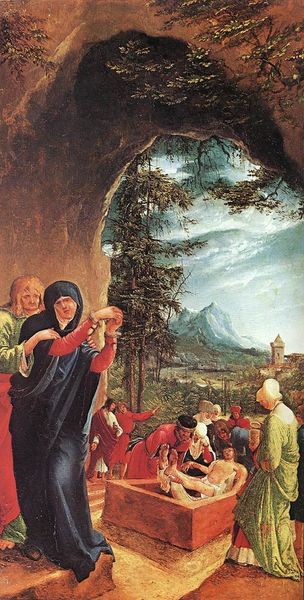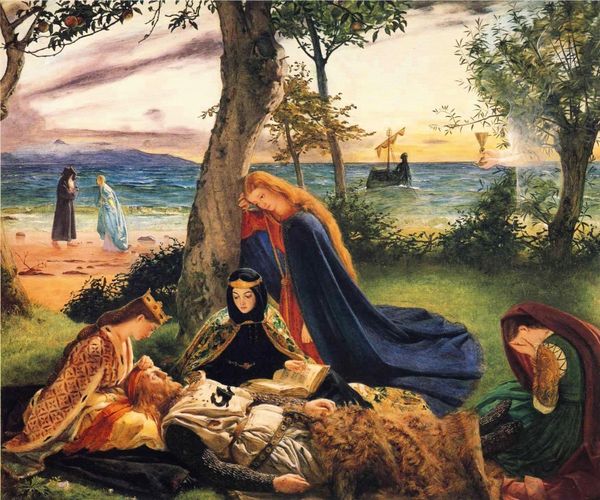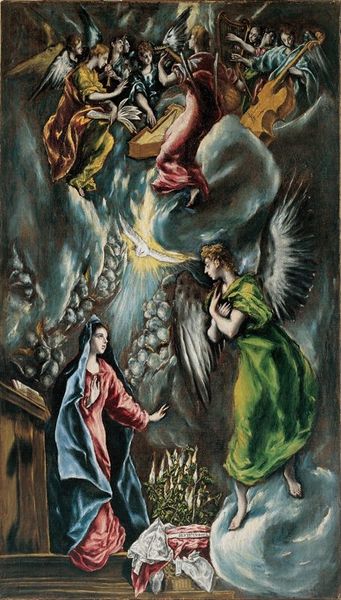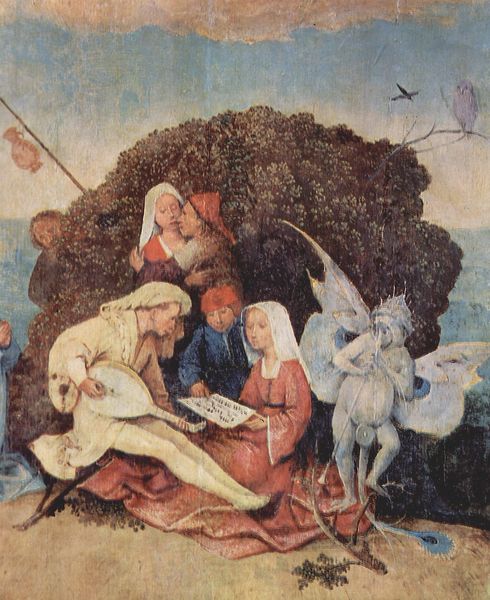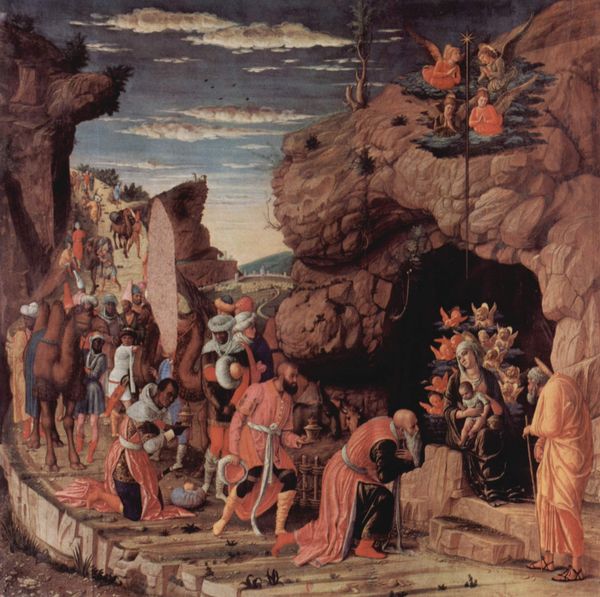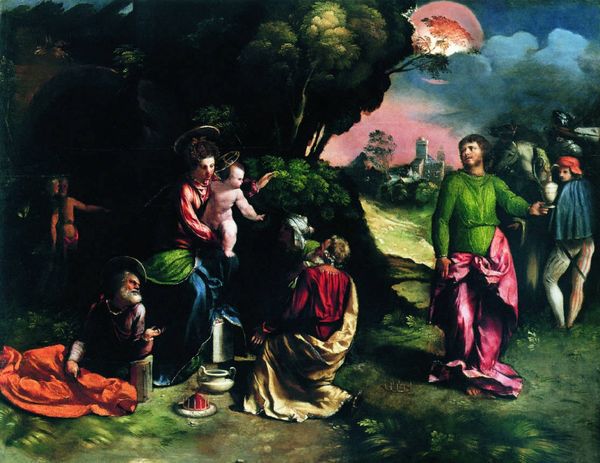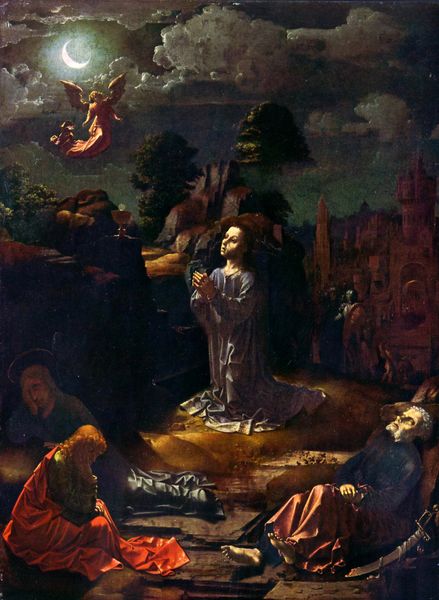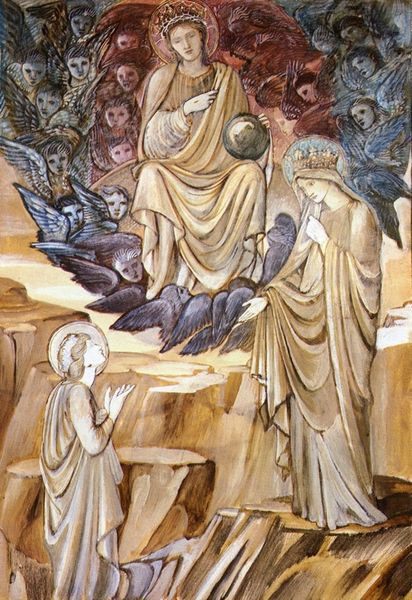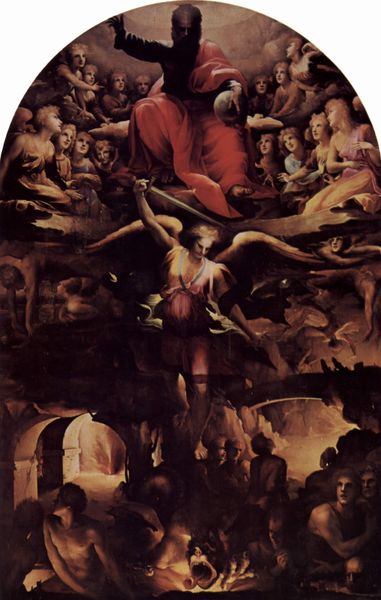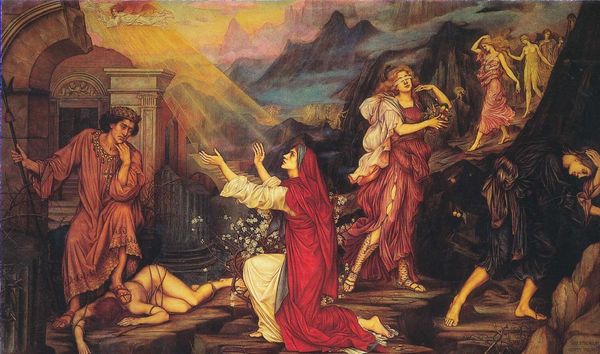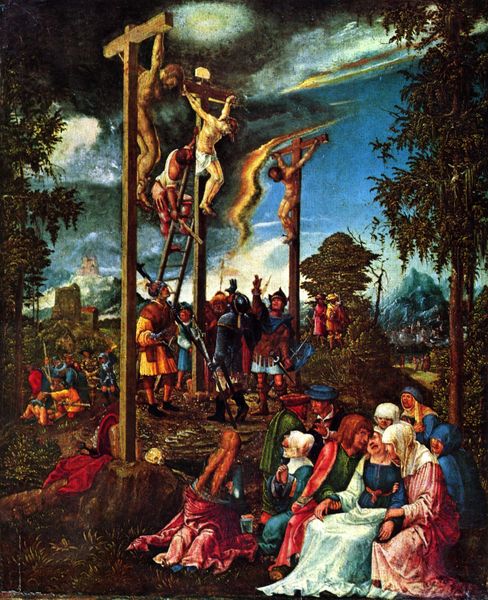
painting, oil-paint
#
painting
#
oil-paint
#
landscape
#
figuration
#
oil painting
#
jesus-christ
#
christianity
#
history-painting
#
northern-renaissance
Copyright: Public domain
Curator: Albrecht Altdorfer's 1516 oil on wood painting, "Passion of Christ," masterfully blends landscape with figuration, presenting a very evocative depiction of the Agony in the Garden. Editor: Yes, that landscape dominates everything, doesn't it? There's something deeply unsettling about the combination of that fiery sky and the darkened, claustrophobic woods. It feels less like a depiction of Christ’s anguish and more like a comment on human isolation in a menacing world. Curator: Note how the dramatic lighting heightens the contrast and underscores the painting’s overall tripartite structure. Christ occupies the middle ground bathed in soft illumination, set against the dark wood, and, crucially, the background explosion, visually framing the human drama as a pivotal moment in the grand, almost cosmic, narrative. Editor: That explosion in the background cannot be ignored. It forces a consideration of the socio-political anxieties of the time. The historical context here is critical. This work appears at a volatile time in history when political and religious structures are collapsing, which resonates in the ominous and fiery backdrop of destruction in what should be a place of prayer. Curator: You're proposing that it might symbolize not divine retribution, but secular political anxieties? Perhaps. Regardless, that visual element accentuates the work’s symbolism and intensifies its spiritual content. Editor: Precisely! The sleeping figures in the foreground are fascinating. What is the artist telling us about complicity, of failing to stand by someone during their time of suffering? The placement of those figures in this image is meant to underscore the emotional stakes in this moment of potential betrayal. Curator: Those forms could, nonetheless, emphasize how faith hinges on individual devotion during moments of collective moral failing; the dramatic setting thereby becomes an appropriate landscape for private anguish and public failure. Editor: A landscape fraught with human failings and fears, then. An apocalyptic vision for its era. Curator: Perhaps! The work is clearly more complex than simply a rendering of the biblical Passion; instead, a visual record open to a wealth of interpretations.
Comments
No comments
Be the first to comment and join the conversation on the ultimate creative platform.
